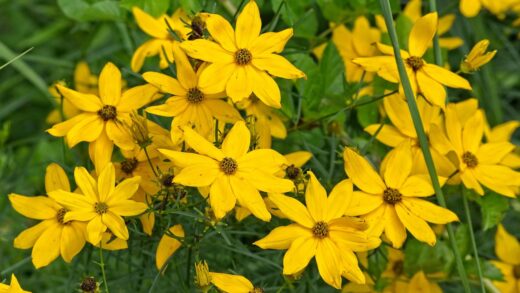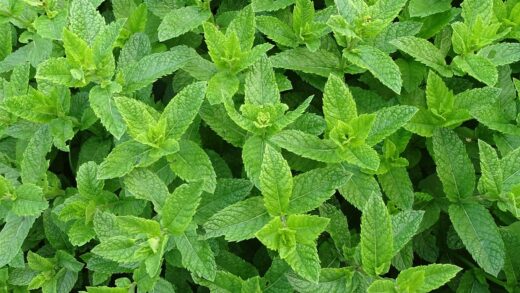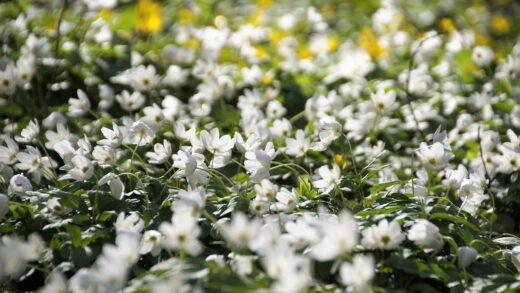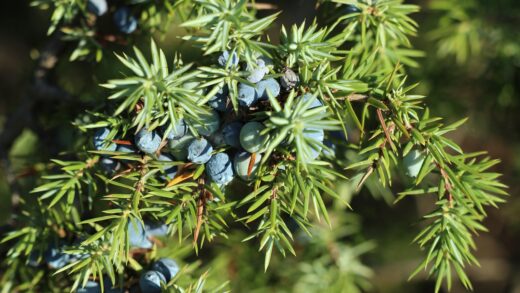Even the most diligently cared-for sleeping hibiscus can occasionally fall prey to diseases and pests. While this plant is generally robust and resilient, being aware of the common culprits is the first step toward effective prevention and treatment. A proactive approach, which involves regular inspection and maintaining optimal growing conditions, is the best defense against these potential problems. Recognizing the early signs of an infestation or infection allows for swift intervention, often preventing a minor issue from escalating into a major threat to the plant’s health. A healthy, well-nourished plant is naturally more resistant to attack, but vigilance remains a key component of responsible plant stewardship.
The most common adversaries of the sleeping hibiscus are sap-sucking insects, such as aphids, spider mites, mealybugs, and whiteflies. These pests feed on the plant’s juices, weakening it over time and potentially transmitting diseases. They are often found clustered on new growth, on the undersides of leaves, or in the crevices where leaves join the stem. The damage they cause can manifest as yellowing or stippled leaves, distorted growth, or the presence of a sticky substance called honeydew, which can in turn lead to the growth of sooty mold.
Fungal diseases, while less common than pests, can also affect the sleeping hibiscus, particularly when the plant is grown in suboptimal conditions. Issues like powdery mildew, root rot, and leaf spot are often linked to environmental factors such as poor air circulation, overwatering, or water-logged soil. These diseases can detract from the plant’s ornamental value and, in the case of root rot, can be fatal if not addressed promptly. Maintaining a clean growing area and ensuring proper watering and airflow are crucial preventative measures.
The key to managing these challenges lies in an integrated pest management (IPM) approach. This strategy prioritizes preventative measures and uses the least toxic control methods first, resorting to stronger chemical treatments only when absolutely necessary. It begins with creating a healthy growing environment to minimize plant stress. This is followed by regular monitoring to catch problems early, employing mechanical or biological controls where possible, and finally, using horticultural soaps, oils, or, as a last resort, specific pesticides to control persistent infestations. This thoughtful approach protects not only your plant but also the surrounding environment.
Common sap-sucking pests
Aphids are one of the most frequent pests to trouble the sleeping hibiscus. These small, pear-shaped insects can be green, black, or pink and tend to congregate in dense colonies on tender new growth, flower buds, and the undersides of leaves. They use their piercing mouthparts to suck the nutrient-rich sap from the plant, which can lead to distorted, stunted growth and yellowing leaves. As they feed, they excrete a sticky substance known as honeydew, which can attract ants and provide a growing medium for a black, unsightly fungus called sooty mold.
More articles on this topic
Spider mites are another common foe, and their presence can be difficult to detect in the early stages due to their tiny size. These are not true insects but are related to spiders. They thrive in hot, dry conditions and cause damage by puncturing plant cells to feed. The first sign of an infestation is often a fine, pale stippling or speckling on the leaves. As the population grows, you may see fine webbing on the plant, particularly between the leaves and stems. A severe infestation can cause leaves to turn yellow or bronze and drop off prematurely.
Mealybugs appear as small, white, cottony masses, typically found in protected areas of the plant, such as the leaf axils (where the leaf joins the stem) and on the undersides of leaves. Like aphids, they are sap-suckers that excrete honeydew, leading to sooty mold. Their waxy, cotton-like coating provides them with a degree of protection from predators and some pesticides. A heavy infestation can cause leaf yellowing, leaf drop, and overall stunted growth, significantly weakening the plant over time.
Whiteflies are small, moth-like insects that, as their name suggests, are typically white. They tend to cluster on the undersides of leaves. When an infested plant is disturbed, a cloud of these tiny insects will fly up before quickly resettling. Both the adult and nymph stages feed on plant sap, causing similar damage to aphids, including yellowing leaves and reduced plant vigor. They also produce honeydew, which encourages the growth of sooty mold, further stressing the plant by blocking light from the leaf surfaces.
Strategies for pest control
The first line of defense against any pest is often mechanical removal. For a light infestation of aphids or mealybugs, a strong jet of water from a hose or sprayer can be surprisingly effective at dislodging them from the plant. This method is best done outdoors and early in the day to allow the foliage to dry. For pests like mealybugs that are more tenacious, a cotton swab dipped in rubbing alcohol can be used to spot-treat and dissolve their waxy coating, effectively killing them on contact. Regular inspection and manual removal can keep small problems from becoming large ones.
More articles on this topic
For more widespread infestations, insecticidal soaps and horticultural oils are excellent, less-toxic options. These products work by suffocating soft-bodied insects like aphids, spider mites, and whiteflies upon direct contact. They are generally safe for the plant and have a low impact on beneficial insects and the environment, as they have no residual effect once they dry. It is crucial to thoroughly spray the entire plant, paying special attention to the undersides of leaves where pests love to hide. Repeat applications may be necessary to control newly hatched pests.
Neem oil is another valuable tool in the organic pest control arsenal. Derived from the seeds of the neem tree, it acts as a broad-spectrum insecticide, miticide, and fungicide. It works in multiple ways: as a repellent, an anti-feedant, and a growth regulator that disrupts the life cycle of pests. It is effective against a wide range of common hibiscus pests. As with horticultural oils, it is important to apply neem oil in the evening or on a cloudy day to avoid the risk of leaf burn, and to ensure complete coverage of the plant.
In cases of severe or persistent infestations that do not respond to other treatments, chemical insecticides may be considered as a last resort. If you choose this route, it is vital to select a product that is specifically labeled for use on hibiscus and for the particular pest you are targeting. Always read and follow the manufacturer’s instructions for application and safety precautions carefully. However, it is worth noting that many synthetic pesticides can also harm beneficial insects, so they should be used judiciously as part of a broader integrated pest management strategy.
Common fungal diseases
Root rot is arguably the most serious disease that can affect a sleeping hibiscus, and it is almost always caused by overwatering and poorly draining soil. The fungi responsible for root rot, such as Pythium and Phytophthora, thrive in anaerobic (low-oxygen), waterlogged conditions. The disease attacks the plant’s roots, causing them to turn brown, mushy, and decay. Above ground, the symptoms can be confusingly similar to underwatering, including wilting, yellowing leaves, and stunted growth, because the damaged roots can no longer absorb water and nutrients. Prevention through proper watering is the only effective cure.
Powdery mildew is a fungal disease that is easy to identify. It appears as white, powdery patches on the surfaces of leaves, stems, and buds. While it rarely kills the plant, it is unsightly and can stress the plant by blocking sunlight and inhibiting photosynthesis. Powdery mildew thrives in conditions of high humidity and poor air circulation. It is often more of a problem for plants grown indoors or in densely packed garden beds where airflow is restricted. Ensuring good spacing between plants and providing gentle air movement can significantly reduce the risk.
Leaf spot diseases are caused by various fungi or bacteria and result in distinct spots or blotches on the foliage. The spots can vary in size, shape, and color—often appearing as brown or black lesions, sometimes with a yellow halo around the edge. While minor leaf spot is usually just a cosmetic issue, a severe infection can cause significant defoliation, weakening the plant. These diseases are often spread by splashing water, so watering the soil at the base of the plant rather than overhead can help in their prevention.
Sooty mold, as mentioned earlier, is a fungus that grows on the sweet, sticky honeydew excreted by sap-sucking insects. It appears as a black, soot-like coating on the leaves and stems. While sooty mold does not directly infect or feed on the plant itself, it can harm the plant by blocking sunlight from reaching the leaf surface, which interferes with photosynthesis. The presence of sooty mold is therefore not a primary disease, but a clear indicator of an underlying pest infestation that needs to be addressed. Once the pests are eliminated, the sooty mold can be gently washed off the leaves.
Prevention and plant hygiene
The most effective way to manage diseases and pests is to prevent them from taking hold in the first place. This begins with providing the sleeping hibiscus with its ideal growing conditions. A healthy, vigorous plant growing in the right location with proper light, water, and nutrition is far less susceptible to stress and better equipped to fend off attacks. Avoiding stressors like overwatering, underwatering, or improper light exposure is your primary and most powerful tool for prevention.
Good sanitation and garden hygiene play a crucial role. Regularly remove and dispose of any fallen leaves, dead branches, or other debris from around the base of the plant. This material can harbor fungal spores and provide a hiding place for pests. When pruning your sleeping hibiscus, always use clean, sharp tools. Wiping the blades with rubbing alcohol or a disinfectant solution between cuts, especially if you are removing diseased tissue, can prevent the spread of pathogens from one part of the plant to another.
Regularly inspecting your plant is a critical preventative practice. At least once a week, take a few moments to look closely at your sleeping hibiscus. Check the tops and undersides of the leaves, the stems, and the new growth for any signs of pests or disease. Catching a small colony of aphids or the first signs of powdery mildew early makes treatment much easier and more effective than dealing with a full-blown infestation or infection later on. This vigilance allows you to intervene quickly and with the least invasive methods.
Finally, when introducing a new plant into your home or garden, it is wise to quarantine it for a few weeks. Keep the new plant isolated from your existing collection and monitor it closely for any signs of pests or diseases that may have been hitchhiking from the nursery. This simple step can prevent the introduction of new problems to your established and healthy plants. By combining these preventative strategies, you can create a healthy ecosystem where your sleeping hibiscus can thrive with minimal interference from pests and diseases.


















